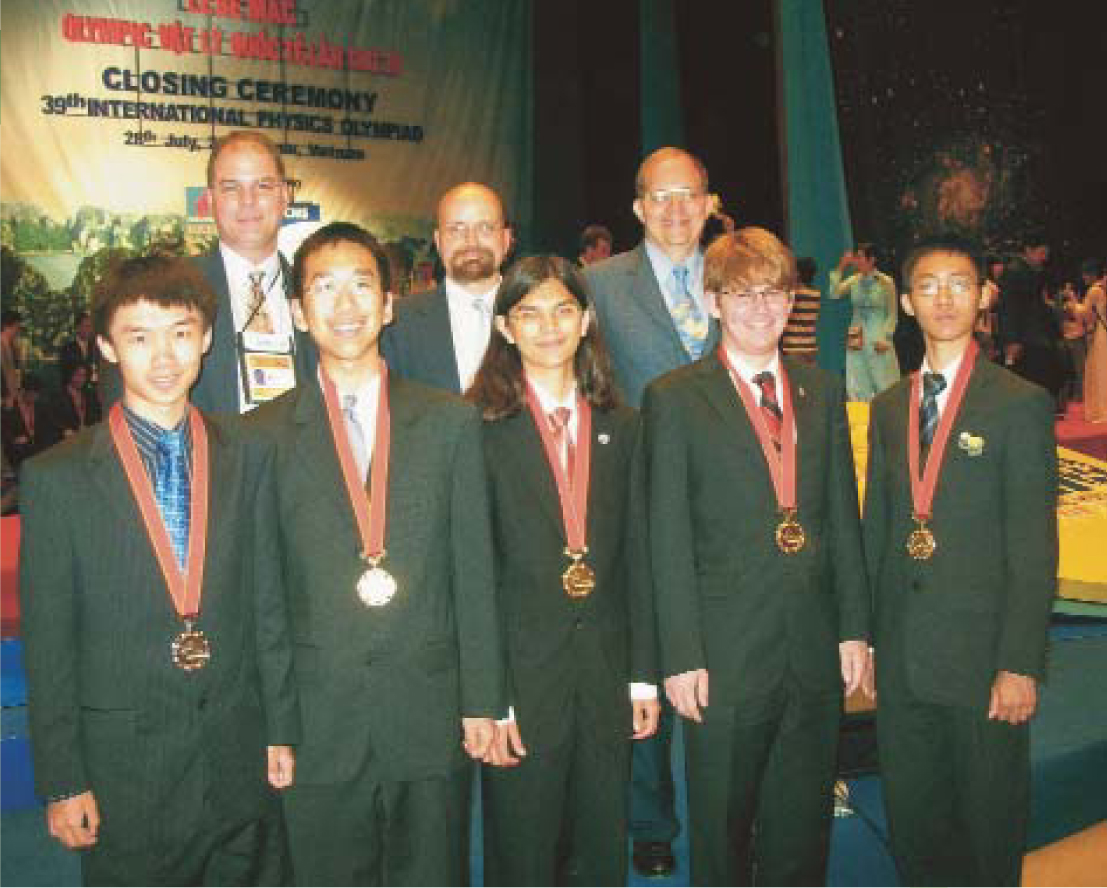Students go for gold at physics olympiad
DOI: 10.1063/1.2982116
More than 380 high-school students representing 82 countries traveled to Vietnam in July to compete in this year’s International Physics Olympiad. Many took time to sightsee in Hanoi and around the countryside. “The experience in Vietnam was great … and the Vietnamese [people] were very hospitable,” says high-school physics teacher Robert Shurtz, co-academic director of the US team. The US students, who were jointly sponsored by the American Institute of Physics and the American Association of Physics Teachers, also blogged their experiences at http://aapt-physicsteam.blogspot.com
The 39th olympiad, however, was not all fun and games. Medals were at stake for experimentally determining the efficiency of a solar cell and explaining the theory behind the mechanics of a Vietnamese water-powered, rice-pounding mortar. The theory question stumped many of the students and caused angst among their coaches.
The Chinese and Taiwanese teams tied for first place, with each earning five gold medals. China’s Longzhi Tan received the highest overall score. Improving on their fifth-place finish from the 2007 contest, the US team tied with India and South Korea for second place, earning four golds and a silver. Claiming gold for the US were Tucker Chan of Princeton, New Jersey; Edward Gan of Silver Spring, Maryland; Joshua Oreman of North Hollywood, California; and Danny Zhu of New York City. Returning contestant Rui Hu of Newark, Delaware, missed gold by 0.2 points and took home a silver medal for the second time.
“I am very proud of the accomplishment and more than a little surprised by it, especially since this is my first year studying physics,” says Oreman. Prior to attending the US physics team training camp, Oreman admits that he had never “even entertained notions” of majoring in physics. Now he’s considering it. “Competing in the [olympiad] has shown me the richness of the field,” he adds.
Hans Jordens, a theoretical physicist at the University of Groningen in the Netherlands, was elected president of the International Physics olympiad at the event. He is the full-time successor to longtime president Waldemar Gorzkowski, who died during last year’s Olympiad. This year’s competition preceded the Summer Olympics held last month in neighboring China, whose team wore Beijing 2008 T-shirts at the olympiad. Unlike the summer games, “physics is not a spectator sport,” says Chan, who views the tournament as an opportunity to build friendships.

The US physics team that competed in the International Physics Olympiad in Vietnam were represented by (front row from left) Rui Hu, Edward Gan, Tucker Chan, Joshua Oreman, and Danny Zhu; their team leaders included (back row from left) Paul Stanley (Beloit College, Wisconsin), Warren Turner (Westfield State College, Massachusetts), and Robert Shurtz (Hawken School, Ohio).
PAUL STANLEY





